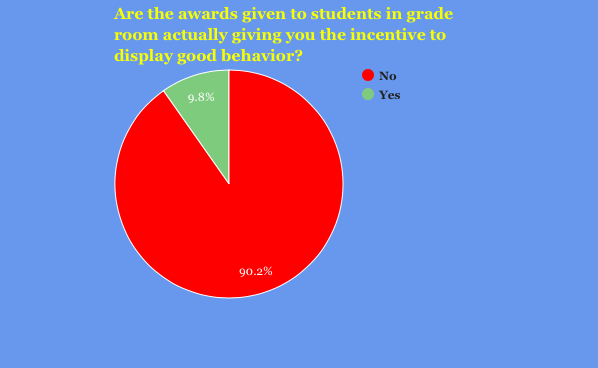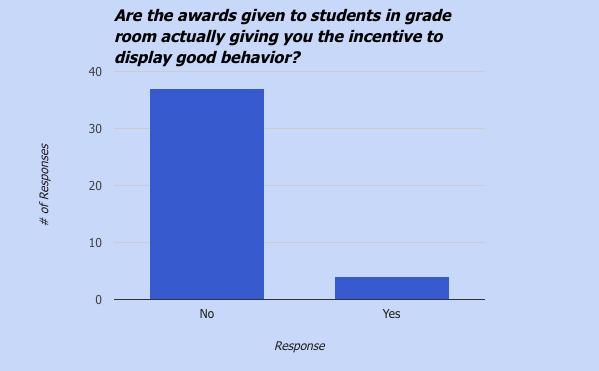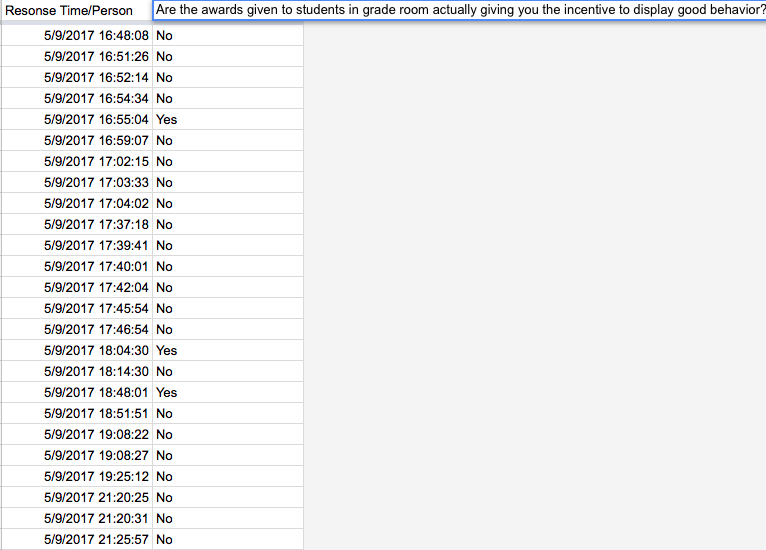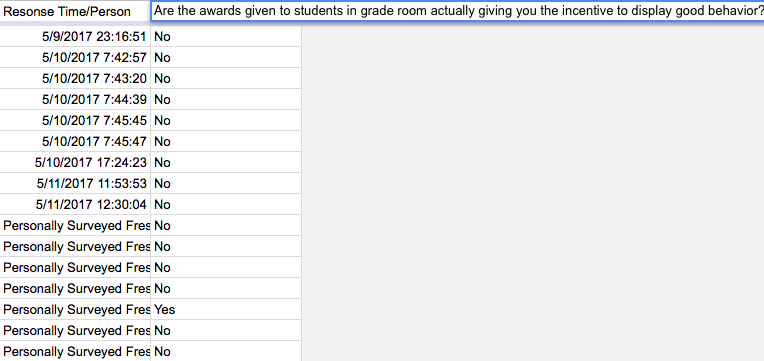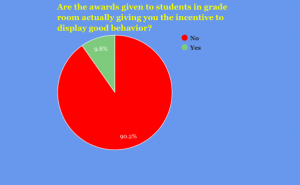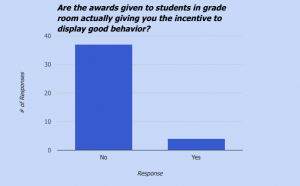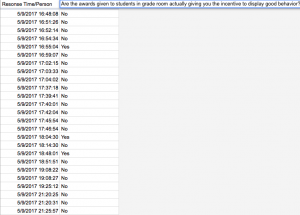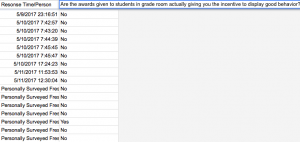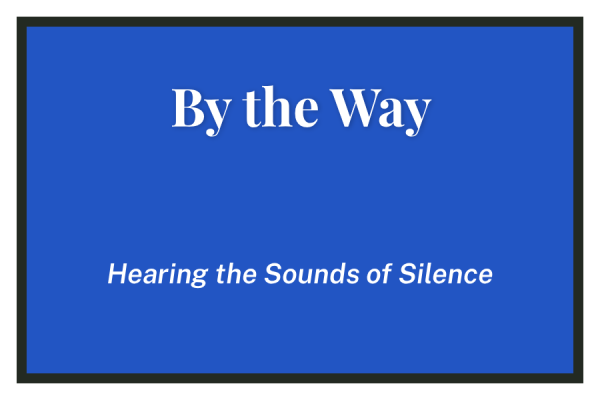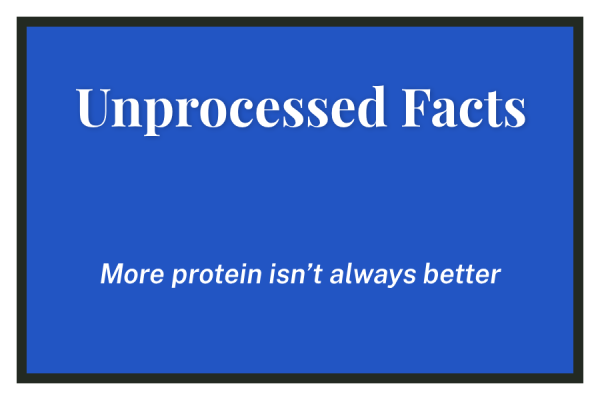How to Encourage Exemplary Behavior
Using “Freakonomics” to Solve a Pressing Parker Issue
“An incentive is a bullet, a lever, a key: an often tiny object with astonishing power to change a situation,” economists Steven Levitt and Stephen Dubner wrote in their 2005 international bestseller “Freakonomics.” Because incentives have such a profound impact on human behavior, studying their effects at Parker can help us understand how to encourage students to exhibit exemplary behavior in the community.
In freshman grade room, individual students are awarded, weekly, with personal notes from teachers. According to freshman Grade Head Cory Zeller, the purpose is to acknowledge those who have exhibited good behavior sometime recently (i.e. random acts of kindness). Although its purpose is not to create an artificial incentive, its results could provide insight into how students respond to them.
A survey was sent out to freshmen to see if this study creates an effective incentive to exhibit exemplary behavior, and the results reflect a neutral (or possibly negative) impact on behavior. Out of the 41 responses completed (out of 85 total freshmen), about 90% (37 responses) responded that the awards do not encourage them to exhibit good behavior, while only four responses said it did. While the kind of self-selection that fueled this survey often skews negative, I think it’s nevertheless reflective of the reality here.
Let’s explore why rewarding students often doesn’t work. Those who may have done one thing positive but are typically disruptive may not be persuaded that their disruptive behavior is wrong. If you were rewarded after exhibiting poor behavior, would you be persuaded to change?
The freshmen I’ve talked to agree that rewarding everyone, as this program is committed to do, does not create a strong incentive to exhibit exemplary behavior, which leaves us with a question to consider: How should Parker encourage its students to exhibit exemplary behavior?
I suggest we start with another question: To what types of incentives do people typically respond? The answer to this is simple: financial, social, and moral. I think it’s fair to say that financial incentives are inappropriate at a school, so let’s consider the other two.
Let’s begin with a moral incentive. In a study in Haifa, Israel, the economists Uri Gneezy and John List attempted to solve a crisis concerning parents who consistently picked up their children late from preschool, leaving the teachers to work extra time. They initially created a financial incentive: parents would pay a small fine if they were late.
While the assumption was that the parents would pick up their child more punctually, the results showed the opposite. The small fine eliminated the feeling of guilt from the parents, causing them to pick up their children late more frequently. Such guilt is an example of a moral incentive. The lesson: moral incentives can work even more successfully than we may initially presume.
So how do we translate our newfound knowledge of moral incentives from these Israeli preschools to the Parker community? We make the students feel guilty about their improper behavior. For example, you could have the teacher personally address each disruptive individual concerning the disruptive behavior, which may be consuming class time, therefore causing their classmates’ grades to drop. That’s a moral incentive at work.
Let’s rewind and dive back into the freshmen grade and—more specifically—a particular language class.
This class is infamous for the number of students who get sent out of class—on average about two to three students every day. Freshman Rohan Jain—a student in that class—describes the behavior as “disrespectful to the respectful students who are trying to learn.”
To resolve this abnormal disruption, the teacher should implement the aforementioned method of guilt or even tell a story of students who impinged upon the aspirations of other students, therefore leading to some poor consequence in the long-run (e.g. their classmates’ disruptive behavior, which might eventually result in rejection at their dream college).
Now let’s move on to the social incentive. In short, a social incentive is a social pressure to behave a certain way that isn’t imposed by authority. Placing one disruptive kid in a class with all respectful students would most likely force the disruptive kid to conform to the new norm. It is not a coincidence that, in this class, there are more than a few disruptive kids, which creates an environment that encourages this behavior.
So let’s respond to the question we set out to answer. How should we encourage good behavior at Parker? While the answer is to use moral and social incentives, another question remains: Are these methods “Parkeresque”? Is guilt the Parker way?
While guilt at first glance seems far from aligned with Parker’s values, Parker encourages the success of its students (as any school should), and guilt allows the disruptive students to recognize the potential negative consequences of their actions.
Now, the social incentive. To quote John Dewey, a leader in the movement for progressive education, “Education fails because it neglects this fundamental principle of the school as a form of community life.” If the community will determine the success of an individual, creating these incentives isn’t just the right thing to do. It’s the Parker thing to do.



